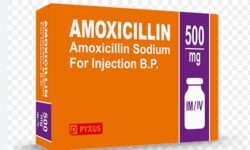Dandelion vs Chrysanthemum: Review
When it comes to choosing between dandelion and chrysanthemum, it can be difficult to determine which one is better for your health and well-being. Both of these plants have a long history of use in traditional medicine and culinary practices, and each offers a unique set of characteristics and health benefits. In this blog post, we will explore the origins, characteristics, and health benefits of both dandelion and chrysanthemum to help you make an informed decision about which one may be the best choice for you.
Dandelion Vs Chrysanthemum: Which Is Better?
When it comes to choosing between dandelion and chrysanthemum, many people wonder which one is better. Both of these plants have their own unique characteristics and qualities, making it difficult to determine which one is superior. In this article, we will explore the differences between dandelion and chrysanthemum, and shed some light on which one may be the better choice for you.
Let’s start by discussing the origins and characteristics of dandelion. Dandelion, scientifically known as Taraxacum officinale, is a flowering plant that belongs to the Asteraceae family. Originally native to Europe and Asia, dandelions are now found all around the world. They are well-known for their bright yellow flowers and fluffy seed heads, which disperse in the wind. Dandelions are considered to be invasive weeds by some, but they also have several health benefits and culinary uses.
Now, let’s move on to the origins and characteristics of chrysanthemum. Chrysanthemum, known by its scientific name Chrysanthemum morifolium, is a flowering plant that belongs to the Asteraceae family, just like dandelion. It is native to East Asia and is particularly popular in China, where it holds significant cultural and medicinal value. Chrysanthemums come in a wide range of colors, such as yellow, white, pink, and purple. These flowers are known for their intricate and beautiful petals, which give them a distinct appearance.
| Feature | Dandelion | Chrysanthemum |
|---|---|---|
| Color | Yellow | Varies (commonly white, pink, yellow) |
| Height | Short | Varies (short to tall) |
| Blooming Season | Spring to Autumn | Late Summer to Fall |
| Leaf Shape | Irregularly toothed | Feathery, lobed |
| Uses | Medicinal, Culinary | Ornamental, Medicinal |
| Life Cycle | Perennial | Perennial |
| Fragrance | None | Varies (strong to mild) |
| Growth Habit | Low-growing rosette | Upright, bushy |
| Climate | Adaptable, common in lawns | Prefers temperate climates |
| Advantages | Edible leaves, Medicinal properties | Ornamental value, Medicinal uses |
| Disadvantages | Can be invasive, considered a weed | May cause skin irritation in some |
| Flower Size | Small | Varies (small to large) |
| Propagation | Seeds, Root division | Cuttings, Division |
| Rating (0-10) | 7 | 9 |
Dandelion: Origins And Characteristics
Dandelions are a common sight in many meadows and lawns, but have you ever wondered about their origins and characteristics? Dandelions belong to the family Asteraceae and the genus Taraxacum. They are native to Europe and Asia but have now spread to many other regions around the world. These hardy plants can thrive in various climates and are often considered as weeds due to their ability to spread rapidly.
One of the defining characteristics of dandelions is their appearance. They typically have a rosette of leaves that form at the base of the plant. The leaves are deeply lobed and have a distinct tooth-like shape, which gives them the name “dent-de-lion” in French, meaning lion’s tooth. Dandelions also produce yellow flowers that consist of numerous small petals arranged in a ray-like formation. These flowers eventually give way to the familiar round puffy seed heads, which disperse their seeds with the help of the wind.
Although often seen as a nuisance in lawns, dandelions have a long history of medicinal and culinary uses. They have been used in traditional medicine for centuries to treat various ailments, including liver disorders, digestive problems, and skin conditions. Dandelion leaves are rich in vitamins A, C, and K, as well as minerals such as iron and potassium.
- Some common health benefits of dandelion include:
- – Supporting liver health: Dandelion is believed to help detoxify and support liver function.
- – Aiding digestion: Dandelion can act as a natural diuretic and help promote healthy digestion.
- – Boosting immune system: The vitamins and minerals found in dandelion can support overall immune health.
- – Anti-inflammatory properties: Dandelion contains compounds that may possess anti-inflammatory properties.
Furthermore, dandelions are not just beneficial for humans. They also play a role in the ecosystem by attracting pollinators such as bees and butterflies. The leaves of dandelions are a food source for certain caterpillars, while the flowers provide nectar for bees. Additionally, dandelions have deep taproots that can help improve soil quality by breaking up compacted soil and bringing nutrients to the surface.
| Dandelion | Chrysanthemum |
|---|---|
| Belongs to the genus Taraxacum | Belongs to the genus Chrysanthemum |
| Native to Europe and Asia | Native to East Asia, particularly China and Japan |
| Has deeply lobed leaves and yellow flowers | Has pinnately lobed leaves and colorful flowers |
| Known for its medicinal and culinary uses | Known for its ornamental value in gardens |
In conclusion, dandelions have fascinating origins and unique characteristics. Despite being considered as weeds by some, they offer various health benefits and contribute to the ecosystem. So, the next time you spot a dandelion, remember its rich history and the valuable role it plays in both nature and human health.
Chrysanthemum: Origins And Characteristics
The chrysanthemum is a beautiful and versatile flower that has captured the attention of people all over the world. It has a rich history and fascinating characteristics that make it a popular choice for gardens, bouquets, and even traditional medicine. Let’s delve into the origins and characteristics of the chrysanthemum.
Origins: The chrysanthemum, scientifically known as Chrysanthemum morifolium, is native to China. It has been cultivated for over 2,500 years and holds great cultural significance in the East Asian countries. The flower was later introduced to Japan in the 8th century and became the emblem of the emperor and the imperial family.
Characteristics: Chrysanthemums are herbaceous perennial plants that belong to the Asteraceae family. They come in a wide range of colors, including yellow, white, pink, and purple, and may have single or multiple layers of petals. The flower heads can vary in size, ranging from small and dainty to large and showy. Chrysanthemums bloom in the late summer or fall, adding a burst of color to gardens just when other flowers may be fading.
Traditional and Symbolic Significance: In Chinese culture, chrysanthemums symbolize longevity and rejuvenation. They are often associated with autumn and featured in art, poetry, and traditions during the Mid-Autumn Festival. In Japan, the flower represents the sun and is a symbol of the emperor and imperial family. Additionally, chrysanthemums are used in traditional medicine in both countries for their believed healing properties.
- Chrysanthemum tea, made from the dried petals, is popular for its soothing and calming effects. It is believed to detoxify the body and improve digestion.
- Chrysanthemum extracts are used in skincare products for their anti-inflammatory and antioxidant properties, helping to promote healthy and youthful-looking skin.
- The flower is also used in traditional Chinese medicine to alleviate headaches, fever, and even eye problems.
| Color | Meaning |
|---|---|
| Yellow | Friendship, joy |
| White | Purity, innocence |
| Pink | Love, romance |
| Purple | Royalty, nobility |
The chrysanthemum is undoubtedly a fascinating flower with a rich history and cultural significance. Its origins in China and subsequent popularity in Japan have made it an iconic symbol in both countries. Whether you appreciate its beauty in a floral arrangement, enjoy its health benefits in tea and skincare products, or simply admire its vibrant colors, the chrysanthemum is a flower that continues to captivate and inspire people around the world.
Dandelion: Health Benefits And Uses
The dandelion, also known as Taraxacum officinale, is a common flowering plant that belongs to the Asteraceae family. It is native to Europe and Asia but can now be found in various parts of the world. Dandelions are often considered to be weeds due to their ability to thrive in different environments and spread easily. However, these vibrant yellow flowers have been used for centuries in traditional medicine for their numerous health benefits and various culinary uses.
One of the main health benefits of dandelion is its ability to support liver health. The plant contains compounds that help stimulate the production of bile, which aids in the digestion and absorption of nutrients. Additionally, dandelion has diuretic properties, meaning it increases urine production and helps detoxify the liver by flushing out toxins. Its detoxifying effects also extend to the kidneys, making it a valuable herb for promoting overall urinary tract health.
Furthermore, dandelion is rich in antioxidants, including beta-carotene, vitamin C, and flavonoids. These antioxidants help protect the body against harmful free radicals, which can cause oxidative stress and contribute to various chronic diseases. Regular consumption of dandelion may therefore help reduce the risk of conditions such as heart disease, certain types of cancer, and age-related macular degeneration.
- Improved digestion and relief from constipation.
- Reduced inflammation and relief from arthritis pain.
- Enhanced immune system function.
In addition to its health benefits, dandelion has various culinary uses. The young leaves can be eaten raw in salads or cooked as a nutritious side dish. Dandelion leaves are rich in vitamins A, C, and K, as well as minerals like calcium and iron. The flowers can be used to make dandelion wine, tea, or even jelly. The root can be roasted and ground to make a caffeine-free herbal coffee substitute. The versatility of dandelion in the kitchen allows for creative and nutritious culinary exploration.
| Dandelion | Chrysanthemum |
|---|---|
| Grows in diverse environments | Native to East Asia |
| Used in traditional medicine | Used in traditional Chinese medicine |
| Rich in antioxidants | Also contains antioxidants |
Chrysanthemum: Health Benefits And Uses
Chrysanthemums, also known as mums, are beautiful flowering plants that have been cultivated for centuries for their aesthetic appeal and medicinal properties. These versatile flowers are native to Asia and are known for their vibrant colors and distinctive fragrance. In this blog post, we will explore the various health benefits and uses of chrysanthemums.
One of the key health benefits of chrysanthemums is their ability to boost the immune system. These flowers contain a compound called pyrethrin, which possesses strong antimicrobial and antiviral properties. Regular consumption or use of chrysanthemum tea can help in strengthening your immune system and fighting off common illnesses such as colds and flu.
In addition to boosting the immune system, chrysanthemums are also known for their anti-inflammatory properties. They contain certain compounds like flavonoids and coumarins, which have been found to reduce inflammation in the body. This makes chrysanthemum tea a popular remedy for conditions such as arthritis, allergies, and respiratory disorders.
- Moreover, chrysanthemums are known for their calming and relaxing effects on the mind and body. They contain compounds like choline and gamma-aminobutyric acid (GABA), which help in reducing anxiety and promoting a sense of relaxation. Drinking chrysanthemum tea can be a great natural remedy for stress and insomnia.
| Health Benefits of Chrysanthemums | Uses of Chrysanthemums |
|---|---|
| Boosts immune system | Chrysanthemum tea |
| Reduces inflammation | Topical creams and lotions |
| Calms and relaxes | Aromatherapy |
- The uses of chrysanthemums extend beyond their medicinal properties. Their vibrant flowers are often used in ornamental arrangements and are a popular choice for festivals and celebrations. They can brighten up any living space and add a touch of elegance and beauty.
- Furthermore, extracts from chrysanthemum flowers are used in skincare products due to their antioxidant properties. They can help in reducing signs of aging, improving skin tone, and providing hydration and nourishment to the skin. Chrysanthemum-infused creams and lotions are often used for treating acne, sunburns, and other skin conditions.
In conclusion, chrysanthemums are not only visually appealing but also offer a wide range of health benefits and uses. From boosting the immune system to reducing inflammation and promoting relaxation, these flowers have been valued in traditional medicine for centuries. Whether enjoyed in the form of a soothing cup of tea or incorporated into skincare routines, chrysanthemums can be a valuable addition to a healthy lifestyle.
Frequently Asked Questions
Q: What are the origins and characteristics of Dandelion?
A: Dandelion is a common yellow-flowered weed that is native to Europe and Asia. It is known for its long, serrated leaves and yellow flowers that turn into fluffy seed heads.
Q: What are the origins and characteristics of Chrysanthemum?
A: Chrysanthemum is a flowering plant that is native to Asia and northeastern Europe. It is known for its beautiful, vibrant flowers in various shapes and colors.
Q: What are the health benefits and uses of Dandelion?
A: Dandelion has numerous health benefits, including its ability to promote digestion, detoxify the liver, boost the immune system, and help with weight loss. It is commonly used in herbal remedies and teas.
Q: What are the health benefits and uses of Chrysanthemum?
A: Chrysanthemum has various health benefits, such as reducing inflammation, relieving stress and anxiety, improving vision, and promoting skin health. It is often brewed into a herbal tea.
Q: Can Dandelion and Chrysanthemum be consumed as food?
A: Yes, both Dandelion and Chrysanthemum can be consumed as food. Dandelion leaves can be added to salads or cooked as a vegetable, while Chrysanthemum petals are used in traditional Asian dishes and teas.
Q: Are there any side effects or precautions to consider when using Dandelion?
A: Although generally safe, individuals with allergies to ragweed or related plants should avoid Dandelion. It may also interact with certain medications, so it’s best to consult a healthcare professional before use.
Q: Are there any side effects or precautions to consider when using Chrysanthemum?
A: While generally safe, Chrysanthemum may cause allergic reactions in some individuals. It is always recommended to consult a healthcare professional before using it, especially if you have known allergies.



